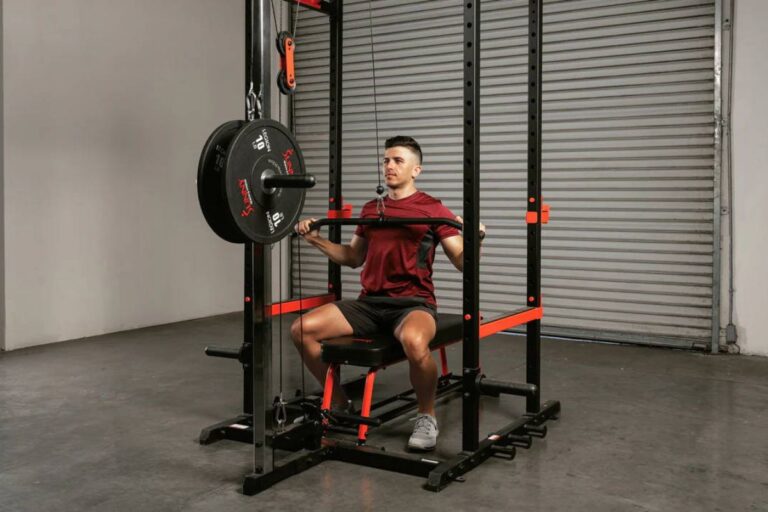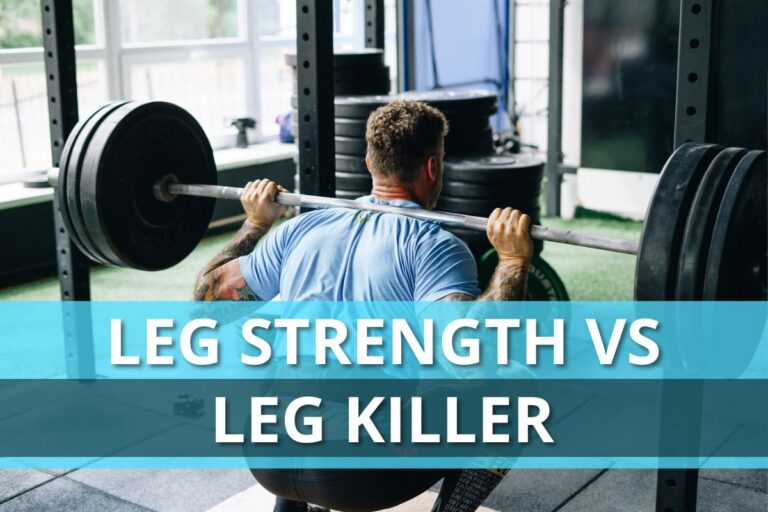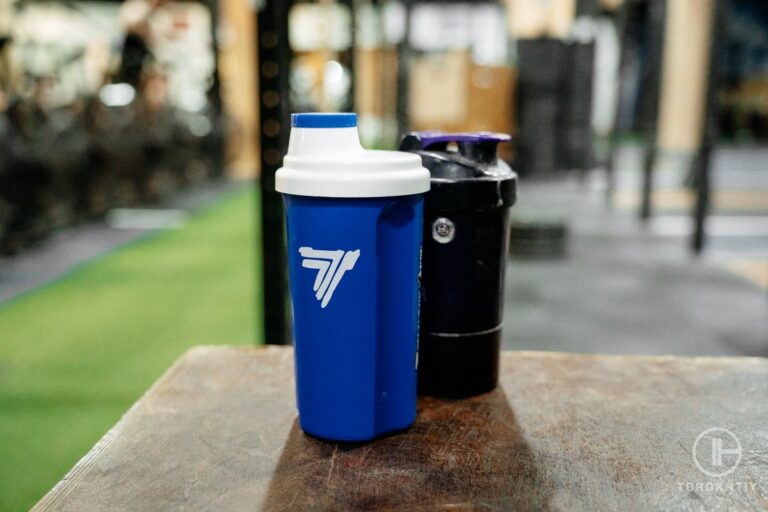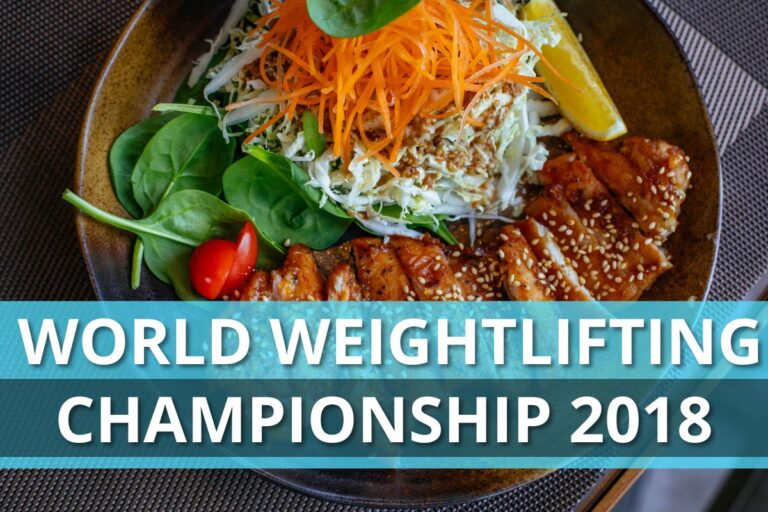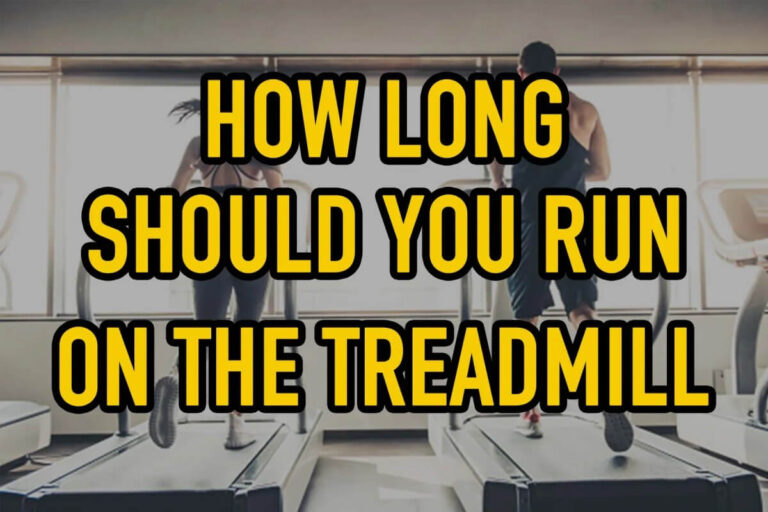Nylon vs Leather Lifting Belt: Which One Should You Get?
The decision between nylon vs leather lifting belt has always been a point of debate. Choosing between the two bases means you have to understand what your specific needs are to know which one is best to get.
The choice of whether you should get a leather vs nylon lifting belt ultimately depends on your needs. If you lift heavier weights, the extra stability leather belts provide will be beneficial for you. Meanwhile, nylon weightlifting belts allow a greater range of motion for highly dynamic movements.
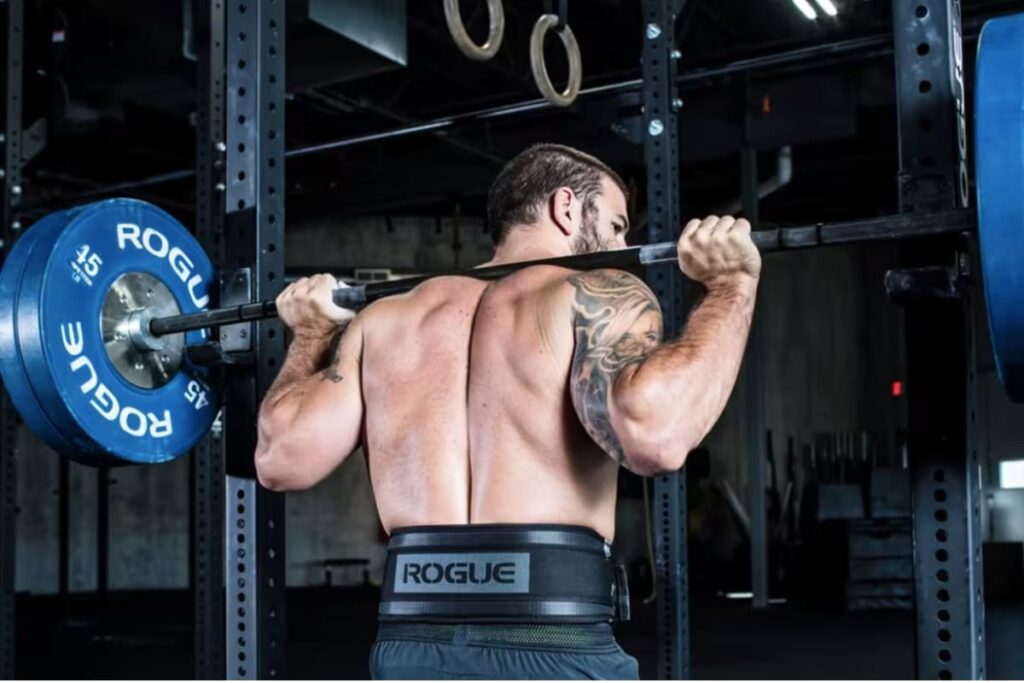
Nylon vs Leather Lifting Belt: What’s the Difference?
Build
Between the two, leather belts are thicker and provide more rigidity. This is because its construction involves several layers of leather reinforced with single or double stitches. Overall durability and stability also depend on the thickness of the leather and the type of stitching used.
Meanwhile, nylon belts have a more flexible and thinner build. So expect nylon belts to be less rigid on the torso but more comfortable. Just like leather belts, these belts also come in different stitching patterns, depending on the style.
Buckle systems
Leather belts typically come in three buckle types: single-prong, double-prong, and levers, although there are occasional triple-pronged belts too. The end of the belts has adjustment holes, the only difference is that pronged belts are easily adjusted on the spot while lever buckles are pre-fixed, requiring a tailor to adjust the belt to your fit.
These are also built of metal, primarily stainless steel, which makes these buckles durable and long-lasting. They can withstand even lifts requiring huge movements.
On the other hand, nylon belts utilize a strap made of either pure nylon or cloth bend to tighten the belt. This variant also has stainless steel buckles but they’re only utilized as a fastening section.
Nylon belts do not have pre-made holes which means they can be pulled a bit tighter. This also allows more room and control in terms of getting the right fit for you. Belts made of nylon come in different levels of rigidity depending on the width of the belt and strap.
The User
Lifters who lift heavier weights mostly opt for leather belts since they offer the most support and stability. For this reason, you’ll see weightlifters, powerlifters, and strongman competitors wearing leather belts most of the time.
Take note that different powerlifting organizations have approved equipment, including lifting belts. But as a rule of thumb, most competitions do not allow belts with thickness over 13 mm.
Now moving to nylon belts – their flexibility works best for highly dynamic lifters such as those who do fitness and recreational lifting. They give a great balance between stability and movability to support big movements comfortably. Nylon belts are also great for beginners who are still learning how to brace properly.
Also read: Best Weightlifting Belts fitness
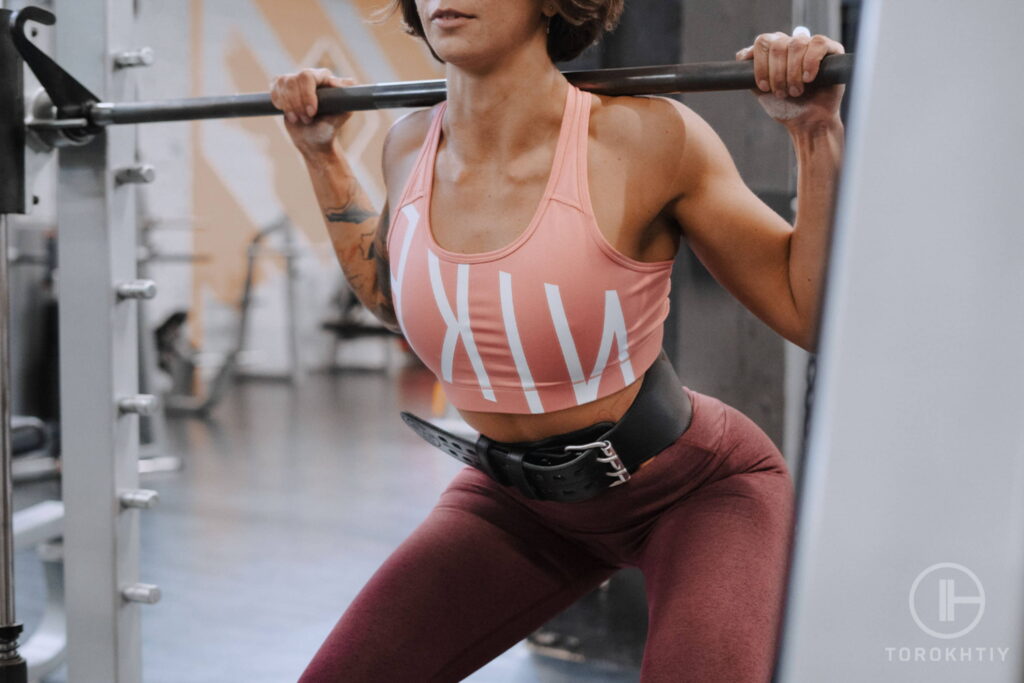
Nylon belt pros and cons
Nylon weightlifting belts are all about comfort due to their softer base so it has the capability to contour to the shape of your torso. This allows for smoother movements while providing moderate support. Beginners are more likely to benefit from nylon belts since they’re comfortable and provide enough support for lighter weights. Another great thing with nylon belts is that they come in varying designs, such as different closure systems, colors, sizes, and shapes, which gives you more options to choose from.
The downside though is that between velcro vs leather weightlifting belts, nylon belts are less superior in supporting heavier lifts. Those with velcro closure systems also tend to wear out quickly. You may feel that the lifting belt provides enough support initially, but it will naturally start giving out eventually, especially with maximum weights. Nylon belts are also less durable compared to leather making them prone to ripping or breaking in the middle of a lift, which may lead to unwanted accidents and injuries.
Pros
- Comfortable fit
- Allows greater range of motion
- Comes in different designs, shapes, and sizes
- Promotes smoother movements
- Great for dynamic exercises
Cons
- Less support compared to leather
- Wears out faster
- Less durable
- Prone to ripping or breaking
Our recommended nylon belt
We recommend the WARM BODY COLD MIND Quick Locking Belt for fitness which has a reliable and strong quick-locking lever buckle for easy unlocking and relocking in between sets. This belt can be fastened securely, providing extra core and back stability and support. It’s lightweight due to the nylon fabric with mesh breathable lining. Also, it comes with added padding inside the belt for better comfort, so an athlete can focus on their lifting performance.
We also found that this belt is 4” in width which makes it possible to use in pro weightlifting competitions, besides wearing it for various intensity fitness, and HIIT workouts that involve training with heavy loads.
Additionally, if you find the belt doesn’t fit you well or doesn’t meet your expectations, you can exchange it easily or ask for a refund.

Leather belt pros and cons
Leather belts are famous for being the sturdier belt type that can support even the heaviest of lifts without tearing apart. Thanks to the thick leather construction, this can support greater pressure and resistance. In fact, some leather belts can even support 600 pounds of lifts and more. If you’re into deadlifts like me, leather belts surely are the best to support your core and lower back during the exercise. It’s also rigid enough to prevent hyperextension of the lower back while providing utmost support to any amount of resistance.
However, the rigid design of leather belts has its own downsides – it makes the belt uncomfortable to wear and may dig into the sides and hips during lifts. Leather belts also have higher price tags because the materials and labors aren’t exactly cheap.
Pros
- Extremely durable
- Offers great stability to the core
- Supports higher pressure and resistance
- Great for deadlifts
Cons
- May be uncomfortable to wear
- More expensive than nylon belts
- May restrict greater ranges of motion
Our recommended leather belt
We recommend the Warm Body Cold Mind’s Leather Weight Lifting Belt as we’ve built this with performance in mind. It’s made of premium 4-inch genuine leather that provides excellent support all throughout the lift. The paddings also allow for an additional 10% lift due to the comfort it offers.
WBCM straps are suitable for various equipment, apart from the bar, including dumbbells and kettlebells. Thus, any athlete from weightlifting, powerlifting, bodybuilding functional fitness might find this accessory helpful.
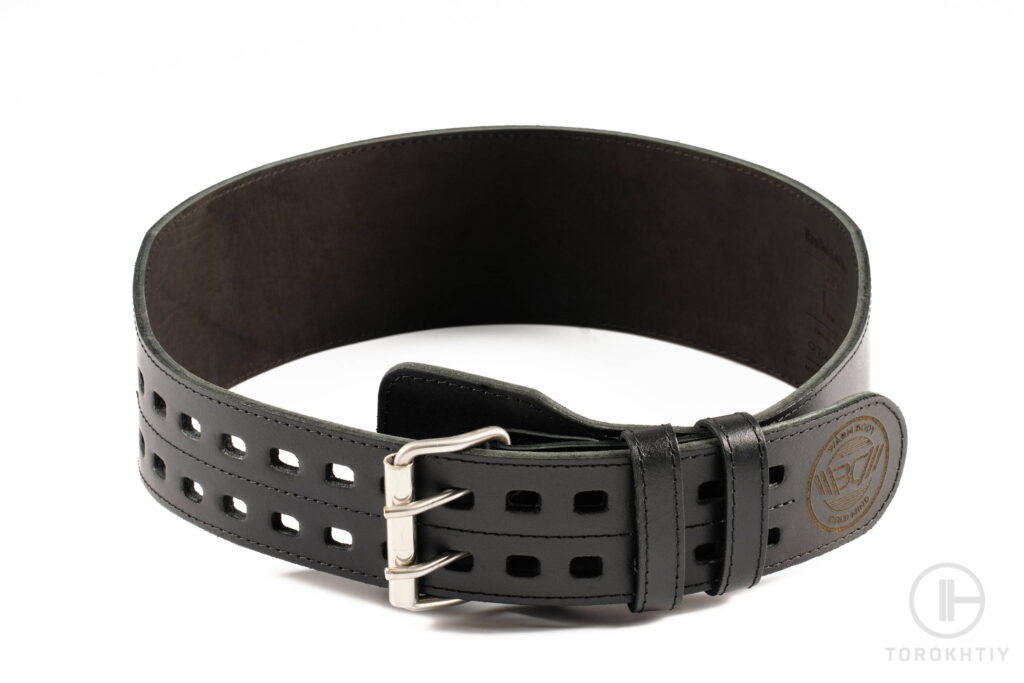
Generally, leather belts offer more stability to heavier weights but may feel too rigid for beginners and for high-intensity training. Meanwhile, nylon belts’ flexible build offers added comfort in exchange for less support.
Any questions and suggestions? Feel free to share your thoughts with us by leaving a comment below!
Also read:
- At What Weight Should You Use a Belt
- Weightlifting Belt Sizing Guide
- Using Belt for Bench Press
- How to Wear Weight Lifting Belt
- 10mm vs 13mm Belt
- Powerlifting Belt vs Weightlifting Belt
- Best Weight Lifting Belt for Women
- Deadlift Belt Position
- Best Dip Belt
- Best Lever Belt
- Gymreapers Lifting Belt Review
- Dark Iron Fitness Belt Review
Why Trust Us?
With over 20 years in Olympic Weightlifting, our team does its best to provide the audience with ultimate support and meet the needs and requirements of advanced athletes and professional lifters, as well as people who strive to open new opportunities and develop their physical capabilities with us.
By trusting the recommendations of our certified experts in coaching, nutrition, dietology, and sports training programming, as well as scientific consultants, and physiotherapists, we provide you with thorough, well-considered, and scientifically proven content. All the information given in the articles concerning workout programming, separate exercises, and athletic performance, in general, is based on verified data. We ensure that you can rely on our professionals’ pieces of advice and recommendations that can be treated as personalized ones which will benefit you and fully meet your needs.
The product testing process is described in more detail here
Author: Oleksiy Torokhtiy
Olympic Weightlifting Champion
Best Results: Snatch – 200 kg,
C&J – 240 kg
Oleksiy Torokhtiy is a professional athlete boasting 20 years of experience in Olympic weightlifting. With multiple European and World titles under his belt, he has showcased his prowess in two Olympic Games (Beijing 2008 and London 2012). Upon concluding his illustrious career, Oleksiy dedicated himself to coaching. By 2022, he had conducted over 200 weightlifting seminars worldwide. He is the visionary behind an international sportswear and accessories brand known for its motto, “Warm Body Cold Mind.” Additionally, he is an esteemed author and the creator of a series of training programs and eBooks.


